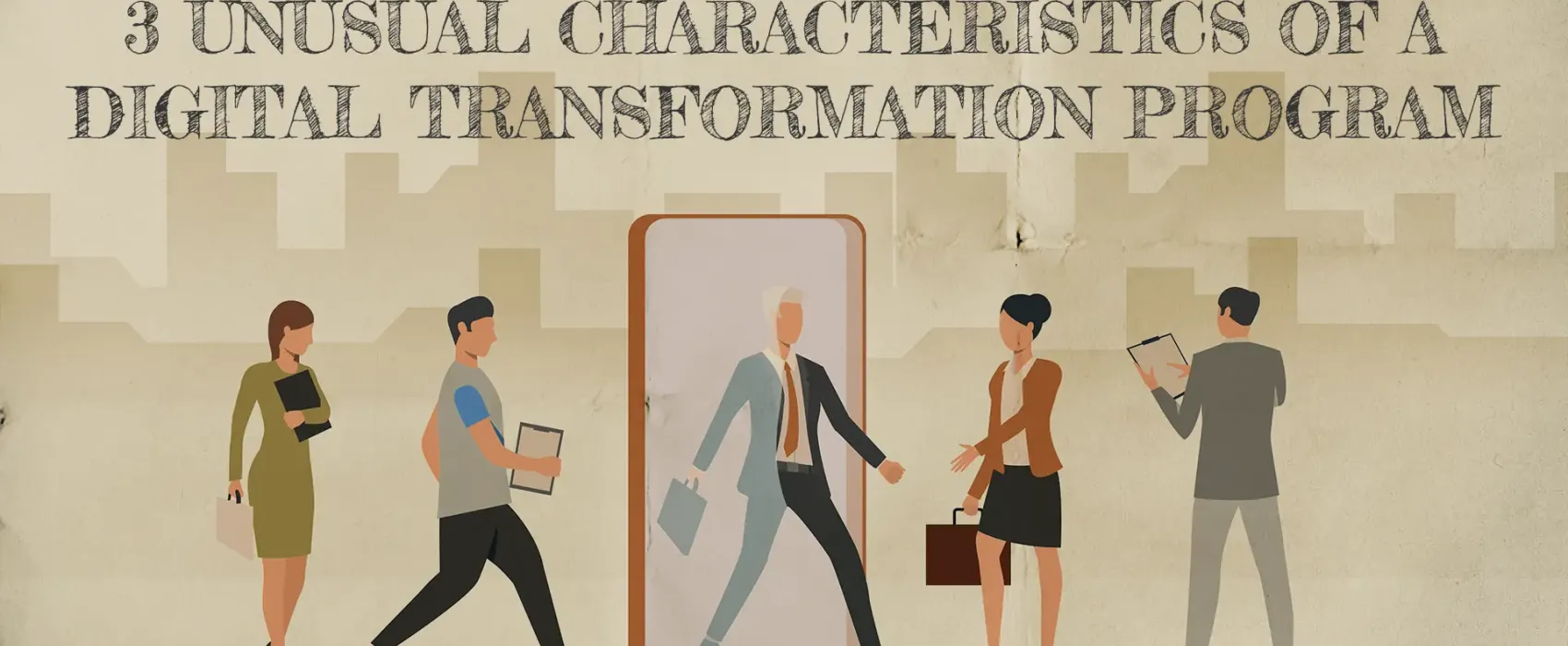Table of Contents:
“Digital Transformation” has become a catch-all label for a range of projects that pretend to introduce digital concepts (because they include technology) and often do not include any semblance of meaningful transformation.
It is in this mis-labelling that digital transformation programs are set up to fail. Along with extended timelines, budget overruns and exhausted project teams, the true impact is the lost opportunity to improve your customer experience, strengthen your product or service offerings and change the way your organisation works. After putting in all this effort, you are stuck fighting yourself out of the status quo.
If you have embarked on your digital transformation or are planning to start, I encourage you to reflect on these three characteristics:
1. Digital Transformation is a Creative Endeavour, Not a Mechanical One.
Launching a digital transformation program will often lead to a suite of program artefacts (schedules, plans, tables, position descriptions etc) that incorrectly position the exercise as a mechanical, linear, pre-defined experience.
This approach creates safety in the form of familiarity for governance and delivery activities alike. It aligns your approach with pre-existing policies and procedures that are not fit for a digital world. It buys time for the program to deliver value because it creates the view that there is work to be done before we can start working on the items that will deliver value.
If the program machine is running, milestones are being met and budgets remain on track, the mechanical approach feels safe (until later).
The mechanical approach eliminates, or at least marginalizes, the creativity required to inspire real transformation.
A creative approach, driven by experimentation, rapid test and learn will usually deliver better outcomes than a mechanical approach. How can we solve today's problems with technology that may only exist later in the program? How can we solve today’s problems with ideas and inspiration that we haven’t yet learnt how to extract from the minds of a newly formed program team?
Prescribing the whole journey and building a machine to deliver it reduces the opportunity to create genuine solutions – build the machine and the right parts you need, only if or as you need them.
2. Most programs are distracted by things that don’t matter in a digital world.
I encourage any director of a digital transformation program to build an understanding of what percentage of your monthly program burn rate is being used to perform activities that only exist because of your organization’s misalignment with new digital ways of working.
We have all worked on programs with governance frameworks designed for older technology projects or worse, capital works programs. These governance frameworks are supported by artefacts and engagement styles that are perfect when you can see exactly where you are going and what the end result of what you are building is meant to look like. They are horrible when you know the outcomes you are trying to achieve but not what you need to do to get there.
Inserting sprints into a project schedule does not mean you are working towards digital outcomes – unless you change the way you work, your program team will constantly be distracted on things that don’t really matter and the percentage cost might surprise you.
3. Technology dominates where instead it should complement.
To their detriment, most digital transformation programs lead with, obsessively discuss, and primarily focus on only the technology aspects of the program.
This technology only focus will create a post-program team comprised of technology, not customer, focused employees and what we really want is people who understand and can anticipate customer needs. It creates an imbalance on the program where the technology voice supersedes the customer voice. It enables program team members to continue recreating the old world, rather than being compelled to build the new world.
By its very nature, a digital transformation program relies on technology solutions for success however the technology should only ever complement the business outcomes, not become them.

Community hub
Kindly adhere to our Community Guidelines.